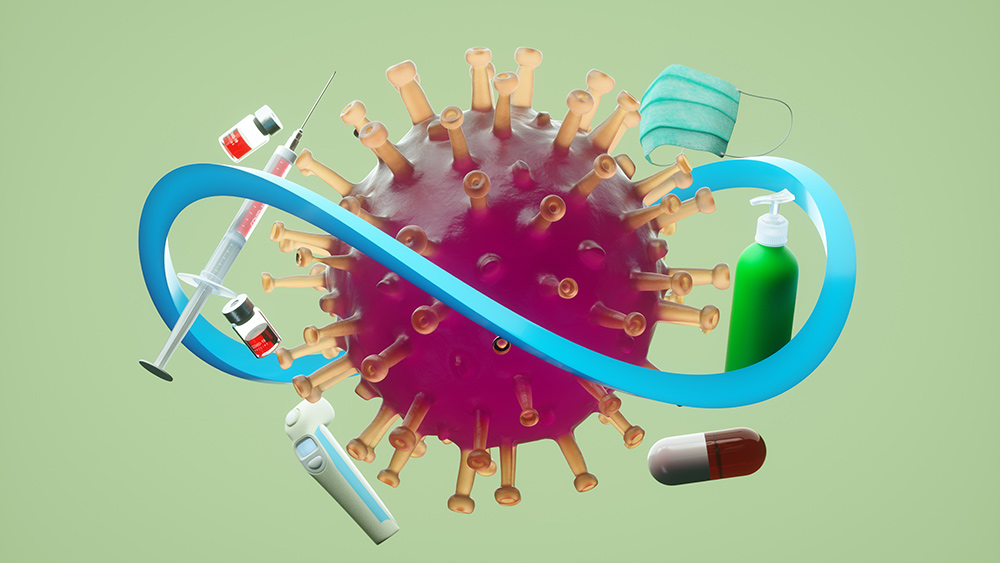Shocking research: Prozac could be driving the antibiotic resistance crisis
12/26/2018 / By Tracey Watson

The Centers for Disease Control and Prevention (CDC) calls antibiotic resistance “a global threat” and “one of the biggest public health challenges of our time.” Antibiotic resistance occurs when bacteria and other germs develop the ability to beat the antibiotic drugs designed to kill them. Infections caused by these pathogens can be difficult – or even impossible – to treat.
Each year, over two million Americans develop an antibiotic resistant infection, resulting in the death of at least 23,000 people. Experts estimate that by the year 2050, antibiotic resistant infections will kill 10 million people each year.
The misuse and overuse of antibiotic drugs in both humans and animals has played a large part in the development of these “superbugs,” but a recent study has warned that the use of other medications is also driving the development of antibiotic resistance.
The study, published in the journal Environment International, confirmed that the antidepressant drug fluoxetine – commonly known as Prozac or Sarafem – “directly causes multi-antibiotic resistance via genetic mutation.” (Related: Antibiotic resistance poses ‘catastrophic threat’ to mankind over next 20 years: Breaking report.)
The Prozac phenomenon
Prozac is one of the world’s most widely prescribed antidepressant drugs and was the first selective serotonin reuptake inhibitor (SSRI) ever produced. The drug was first manufactured in 1988 and was an instant hit. By the end of that same year, over 2.5 million prescriptions had been issued for Prozac. By 2002, annual sales had reached 33 million.
Thought Co. explains how the drug works:
Prozac works by increasing brain levels of serotonin, a neurotransmitter that is thought to influence sleep, appetite, aggression, and mood. …
Although it’s not entirely known why increasing neurotransmitter levels reduces the severity of a depression, it may be that increased levels of serotonin cause changes in the brain’s concentration of neurotransmitter-binding receptors. This might make the brain physically more capable of feeling good. (Related: Antibiotic resistance explodes globally as corrupt, for-profit medical system runs out of chemicals that fight infections.)
A worrying link between Prozac and antibiotic resistance
For their study, researchers from the University of Queensland in Australia set out to demonstrate that it isn’t just the misuse of antibiotics driving the antibiotic resistance crisis. The team had already proven that triclosan – an ingredient commonly added to toothpaste and hand sanitizer– can directly induce antibiotic resistance and were convinced that medications besides antibiotics could also be driving the problem.
Science Alert explains how the study was conducted:
The test involved exposing the bacterium Escherichia coli (or E. coli) to different concentrations of fluoxetine, in body-temperature baths that were changed daily for 30 days.
After this, the mutated bacteria were transferred to agar plates that contained an antibiotic. The researchers found that these bacteria had a greatly increased resistance to antibiotics chloramphenicol, amoxicillin and tetracycline – up to 50 million-fold compared to the control.
The stronger the concentration of fluoxetine, the faster the bacteria mutated over time.
One of the “mutant” bacteria exposed to fluoxetine was found to be resistant to not just one, but multiple antibiotics, including chloramphenicol, tetracycline, ?-lactams, aminoglycoside and fluoroquinolone.
The researchers found that about 11 percent of the fluoxetine consumed by patients passes through their bodies unchanged and then enters the sewer system through urination. For this reason, this drug is incredibly pervasive in the environment where it continues to accelerate the antibiotic resistance problem.
The research team believes that it is likely that other non-antibiotic drugs are similarly driving the antibiotic resistance crisis. They also hope to conduct further testing on fluoxetine’s effects inside the human body. Learn more about the greatest threat facing mankind at Superbugs.news or PsychDrugWatch.com.
Sources for this article include:
Submit a correction >>
Tagged Under:
antibiotic resistance, Antibiotics, Big Pharma, environment, fluoxetine, infections, outbreak, pandemic, Prescription drugs, Prozac, Sarafem, superbugs
This article may contain statements that reflect the opinion of the author
RECENT NEWS & ARTICLES
Infections.News is a fact-based public education website published by Infections News Features, LLC.
All content copyright © 2018 by Infections News Features, LLC.
Contact Us with Tips or Corrections
All trademarks, registered trademarks and servicemarks mentioned on this site are the property of their respective owners.





















